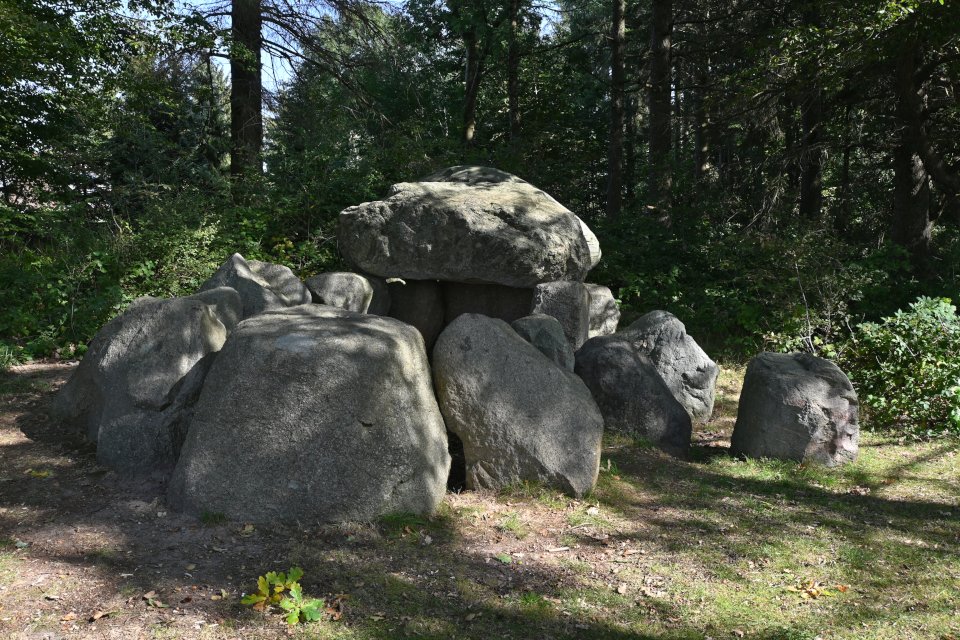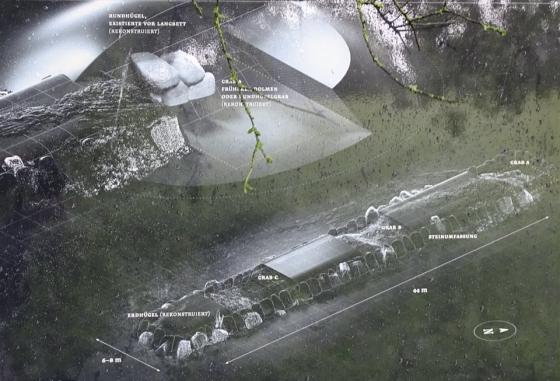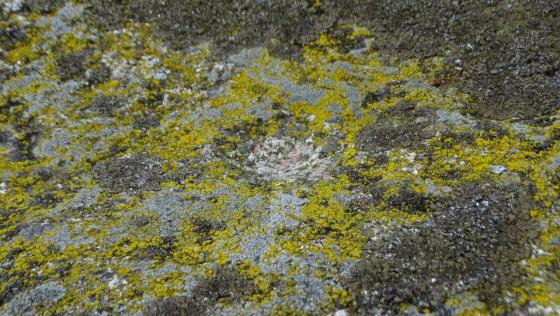taken from the on-site information board of the Kosel community:
Missunde
On the hill there is a barrow that is officially recognized as an archaeological monument. A plaque at the bottom of the hill refers to the battle of Missunde on February 2, 1864.
Large stone grave Missunde – megalithic tomb – giant grave
A passage grave with 11 supporting stones and 4 cap stones. It dates from around 2900-2600 BC and proves that people already lived here at this time (Neolithic Age). They were hunters and gatherers who cleared the grown forest and settled down long after the ice age. They grew crops and raised cattle. They built their graves with boulders from the Ice Age. The smooth side of the stones were turned inside. The gaps were filled with so-called gusset stones and the floor was covered with flint.
The builders of this grave belonged to the so-called Funnel Beaker Culture (ceramic vessels with a funnel-shaped neck). There was a stone setting around the burial mound within 150 to 160 steps of the Missunder megalithic grave; a narrow corridor led to the burial chamber. This grave was restored in 1962. This large stone burial culture originally comes from the eastern Mediterranean and spread to Scandinavia.
This grave originally had four cap stones, two cap stones are missing. It is said that they were still there when the ramparts were built. After that, Gut Ornum probably hewed 42 rear gate posts for the field entrances from these stones. That was common in the past. Many megalithic graves were demolished in the transition from the 17th to the 18th century for the purpose of marking fields. In addition, large boulders from some megalithic graves from our area were used in 1927 for the construction of the Hindenburg dam to Sylt.
Memorial to the battle of 1864: A plaque at the foot of the hill reads: After a century of dispute between related peoples, this memorial is to be renewed as a reminder to fraternal neighbors. Immediately after the battle for the Schlei crossing near Missunde on February 2, 1864, the 2nd Westphalian Infantry Regiment No. 15 had a cast iron plate made for its 20 fallen soldiers in the Rendsburg Carlshütte and attached it to a capstone of the megalithic grave. Because over time this place and the soldiers’ grave at the Ornumer Mühle looked very neglected, the Kosel community, the Schleswig-Holsteinische Heimatbund and the Heimatgemeischaft Eckernförde decided to undertake a thorough restoration. With the help of the Bundeswehr and the Eckernförde State Building School, this new memorial was inaugurated on the 100th anniversary of the Missunde battle and the soldiers’ grave was repaired.





















